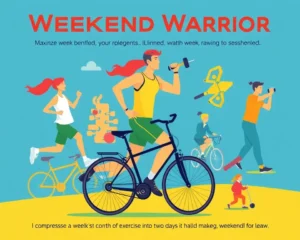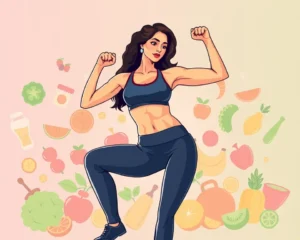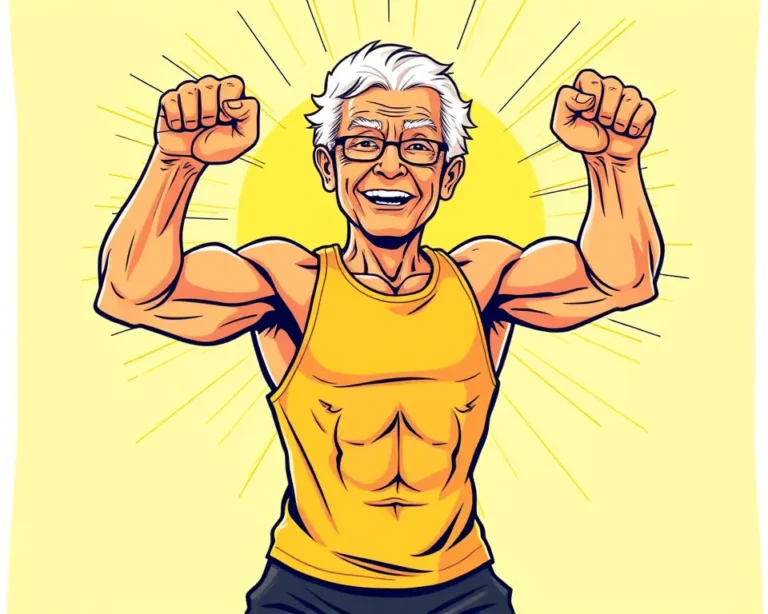For many, the idea of feeling physically fit and energetic at 82 might seem like a distant dream. However, Harry King, a certified fitness trainer, defies these expectations with a dedicated workout routine that makes him feel decades younger. King’s story showcases the incredible potential of exercise to combat the effects of aging and maintain a vibrant, active lifestyle well into one’s 80s. This article explores King’s inspiring journey, his workout regimen, and the broader benefits of exercise for seniors.
Harry King: From Heart Failure to Fitness Trainer
Harry King’s path to becoming a fitness enthusiast and trainer was not without its challenges. Growing up in Georgetown, South Carolina, he was always active, playing basketball and softball until the age of 50. However, at 52, he received discouraging news from a doctor who advised him to avoid walking long distances or taking stairs due to severe arthritis. Unwilling to accept an inactive lifestyle, King embarked on a fitness journey that included hiking and kayaking. At 64, he competed in his final world karate championship but soon after experienced the first of four heart failures. At 66, he received a pacemaker, which he credits with allowing him to continue living an active life. At the age of 80, King decided to become a certified fitness trainer for Planet Fitness, further solidifying his commitment to health and wellness.
The Workout That Turns Back Time
King’s workout routine is a testament to his dedication and understanding of the human body. He regularly engages in weight-training workouts five days a week, with each session lasting 60 to 75 minutes. A key aspect of his routine is focusing on different muscle groups each day, ensuring a balanced and comprehensive approach to fitness.
Upper Body Day
On upper body days, King targets muscles in the chest, back, shoulders, and arms. Exercises might include:
- Bench press: Works the pectoral muscles, triceps, and anterior deltoids.
- Pull-ups or Lat pulldowns: Focuses on the latissimus dorsi, biceps, and trapezius muscles.
- Shoulder press: Targets the deltoids and trapezius.
- Bicep curls: Isolates the biceps brachii muscle.
- Triceps extensions: Works the triceps brachii muscle.
- Rows: Strengthens the back muscles, particularly the rhomboids and trapezius.
- Lateral raises: Targets the medial deltoids, contributing to shoulder width and definition.
Lower Body Day
Lower body workouts are crucial for maintaining mobility, balance, and strength in the legs. King’s routine may incorporate exercises like:
- Squats: A compound exercise that works the quadriceps, hamstrings, and gluteus maximus.
- Leg press: Targets the quadriceps, hamstrings, and glutes with a supported movement.
- Hamstring curls: Isolates the hamstring muscles.
- Leg extensions: Focuses on the quadriceps muscles.
- Calf raises: Strengthens the gastrocnemius and soleus muscles in the calves.
- Lunges: Works the quadriceps, hamstrings, and glutes while also improving balance.
- Deadlifts: A full-body exercise that heavily engages the posterior chain, including the lower back, glutes, and hamstrings.
Core Day
A strong core is essential for stability, balance, and overall functional fitness. King dedicates a day to core exercises, which might include:
- Planks: An isometric exercise that engages the entire core, improving stability.
- Crunches: Targets the rectus abdominis muscle.
- Russian twists: Works the obliques, contributing to rotational core strength.
- Leg raises: Focuses on the lower abdominal muscles.
- Bicycle crunches: Engages both the upper and lower abs, as well as the obliques.
- Wood chops: A dynamic exercise that mimics chopping wood, working the obliques and core stabilizers.
- Back extensions: Strengthens the erector spinae muscles, supporting the lower back.
King typically incorporates seven different exercises into each workout, focusing on working all the major muscle groups. This comprehensive approach ensures that he maintains strength, flexibility, and overall fitness.
The Importance of Exercise for Seniors
Harry King’s story is not just an isolated case of exceptional fitness; it highlights the numerous benefits of exercise for older adults. Regular physical activity can significantly improve health and quality of life in seniors.
Physical Health Benefits
- Reduced Risk of Chronic Diseases: Exercise helps lower the risk of heart disease, stroke, type 2 diabetes, and some types of cancer.
- Improved Cardiovascular Health: Regular physical activity strengthens the heart and improves blood circulation.
- Increased Strength and Balance: Strength training and balance exercises help maintain muscle mass and prevent falls, a major concern for older adults.
- Better Mobility and Independence: Staying active allows seniors to maintain their independence and perform daily activities with greater ease.
- Weight Management: Exercise helps burn calories and maintain a healthy weight, reducing the risk of obesity-related health problems.
- Stronger Bones: Weight-bearing exercises, such as walking and strength training, can help increase bone density and reduce the risk of osteoporosis.
- Improved Sleep: Regular physical activity can improve sleep quality, helping seniors get the rest they need.
Mental Health Benefits
- Improved Mood: Exercise releases endorphins, which have mood-boosting effects and can help reduce symptoms of depression and anxiety.
- Enhanced Cognitive Function: Physical activity has been shown to improve cognitive function, including memory, attention, and processing speed.
- Reduced Stress: Exercise can help manage stress and promote relaxation.
- Increased Self-Esteem: Achieving fitness goals and maintaining an active lifestyle can boost self-esteem and confidence.
- Social Engagement: Participating in group exercise classes or activities can provide opportunities for social interaction and reduce feelings of loneliness.
Recommendations for Senior Exercise
Health organizations recommend that older adults aim for at least 150 minutes of moderate-intensity aerobic activity each week, along with muscle-strengthening activities at least two days a week. Balance exercises are also important for preventing falls.
- Aerobic Activities: Brisk walking, dancing, swimming, and cycling are all excellent choices for aerobic exercise.
- Strength Training: Lifting weights, using resistance bands, or performing bodyweight exercises can help maintain muscle mass and strength.
- Balance Exercises: Activities like standing on one foot, walking backward, or practicing tai chi can improve balance and coordination.
- Flexibility Exercises: Stretching and yoga can help improve flexibility and range of motion.
It’s important for seniors to consult with their doctor before starting a new exercise program, especially if they have any underlying health conditions. A healthcare professional can provide guidance on appropriate activities and help tailor a program to individual needs and abilities.
Tips for Staying Active in Your 80s and Beyond
Staying active in your 80s requires a proactive approach and a commitment to making healthy choices. Here are some tips to help seniors maintain an active lifestyle:
- Make Exercise a Habit: Schedule regular exercise sessions and stick to them as much as possible.
- Find Activities You Enjoy: Choose activities that you find fun and engaging to make exercise more enjoyable.
- Incorporate Activity into Daily Life: Look for opportunities to be active throughout the day, such as taking the stairs instead of the elevator or walking during lunch breaks.
- Stay Social: Join a senior exercise class or find a workout buddy to stay motivated and connected.
- Listen to Your Body: Pay attention to any pain or discomfort and adjust your activities accordingly.
- Stay Hydrated: Drink plenty of water before, during, and after exercise.
- Eat a Healthy Diet: Nourish your body with a balanced diet that includes plenty of fruits, vegetables, whole grains, and lean protein.
- Get Enough Sleep: Aim for 7-8 hours of sleep each night to allow your body to recover and repair.
- Manage Stress: Practice relaxation techniques such as meditation or deep breathing to manage stress and promote overall well-being.
- Regular Check-Ups: Schedule regular check-ups with your doctor to monitor your health and address any concerns.
Conclusion
Harry King’s story is a powerful reminder that age is just a number and that it’s never too late to prioritize your health and fitness. His dedication to exercise has not only transformed his own life but also inspired countless others to embrace an active lifestyle. By following his example and incorporating regular physical activity into their routines, seniors can experience the numerous benefits of exercise and enjoy a vibrant, fulfilling life well into their golden years. Staying active in your 80s and beyond is not just about living longer; it’s about living better.







